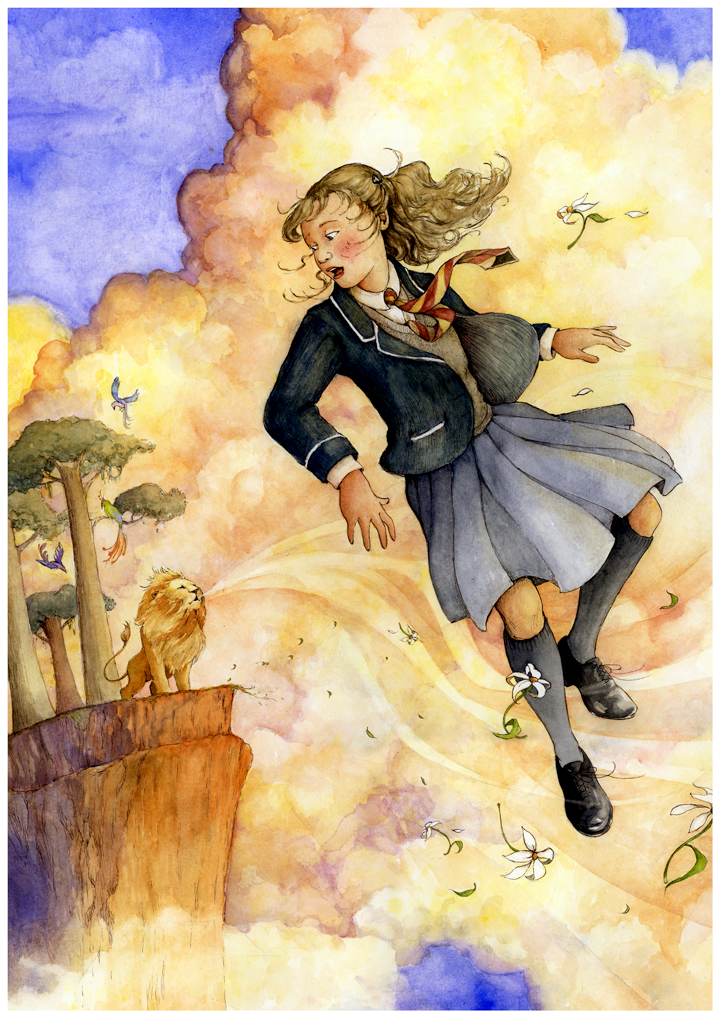One treads on sacred ground when it comes to re-illustrating a classic. The classic has already reached the status of, well…a classic. So, is there a reason to “fix what ain’t broke”? Here’s a nice presentation by Lexington Public Library Children’s Librarian Meggan Conway on the subject. Meggan has also set up a website devoted to examining classic books that have been re-imagined: http://reillustrated.weebly.com/
Check out Elizabeth Bird’s blog post that provides more nice examples of re-illustrated books. She poses the question: “Do any of these improve on the original? Or is re-illustration never really a case of improvement but rather giving kids a variety of different ways to look at something familiar?”
While there are many different views on the subject, the latter is where I choose to stand. I have the highest respect for the magnificent Pauline Baynes, and marvel over her effortless use of lines and loose color washes she added to her original Narnia illustrations. People forever will (and should) honor those drawings as the quintessential benchmark for the world of Narnia. But as an illustrator how can I help myself when I read C.S. Lewis?
“Stand still. In a moment I will blow. But, first, remember, remember, remember the signs. Say them to yourself when you wake in the morning and when you lie down at night, and when you wake in the middle of the night. And whatever strange things may happen to you, let nothing turn your mind from following the signs. And secondly, I give you a warning. Here on the mountain I have spoken to you clearly: I will not often do so down in Narnia. Here on the mountain, the air is clear and your mind is clear; as you drop down into Narnia, the air will thicken. Take great care that it does not confuse your mind. And the signs which you have learned here will not look at all as you expect them to look, when you meet them there. That is why it is so important to know them by heart and pay no attention to appearances. Remember the signs and believe the signs. Nothing else matters. And now, daughter of Eve, farewell – “
The voice had been growing softer towards the end of this speech and now it faded away altogether. Jill looked behind her. To her astonishment she saw the cliff already more than a hundred yards behind her, and the Lion himself a speck of bright gold on the edge of it. She had been setting her teeth and clenching her fists for a terrible blast of lion’s breath; but the breath had really been so gentle that she had not even noticed the moment at which she left the earth. And now, there was nothing but air for thousands upon thousands of feet below her. – The Silver Chair, chapter 2, The Chronicles of Narnia (C.S. Lewis)
Here are two of Pauline Baynes’ original illustrations surrounding the above scene published in 1953:

The Silver Chair, chapter 1

The Silver Chair, chapter 2
In 1998, Ms. Baynes added water-color washes to the original black and white line illustrations for the seven volumes of Narnia:

The Silver Chair, chapter 1

The Silver Chair, chapter 2
And my own interpretation:

The Silver Chair, The Chronicles of Narnia (C.S. Lewis)
illustration by Alice Ratterree
What are your favorite re-illustrated classics? Are there any classics you would like to see re-imagined?
Today's illustrator of the day: Carl Larrson
